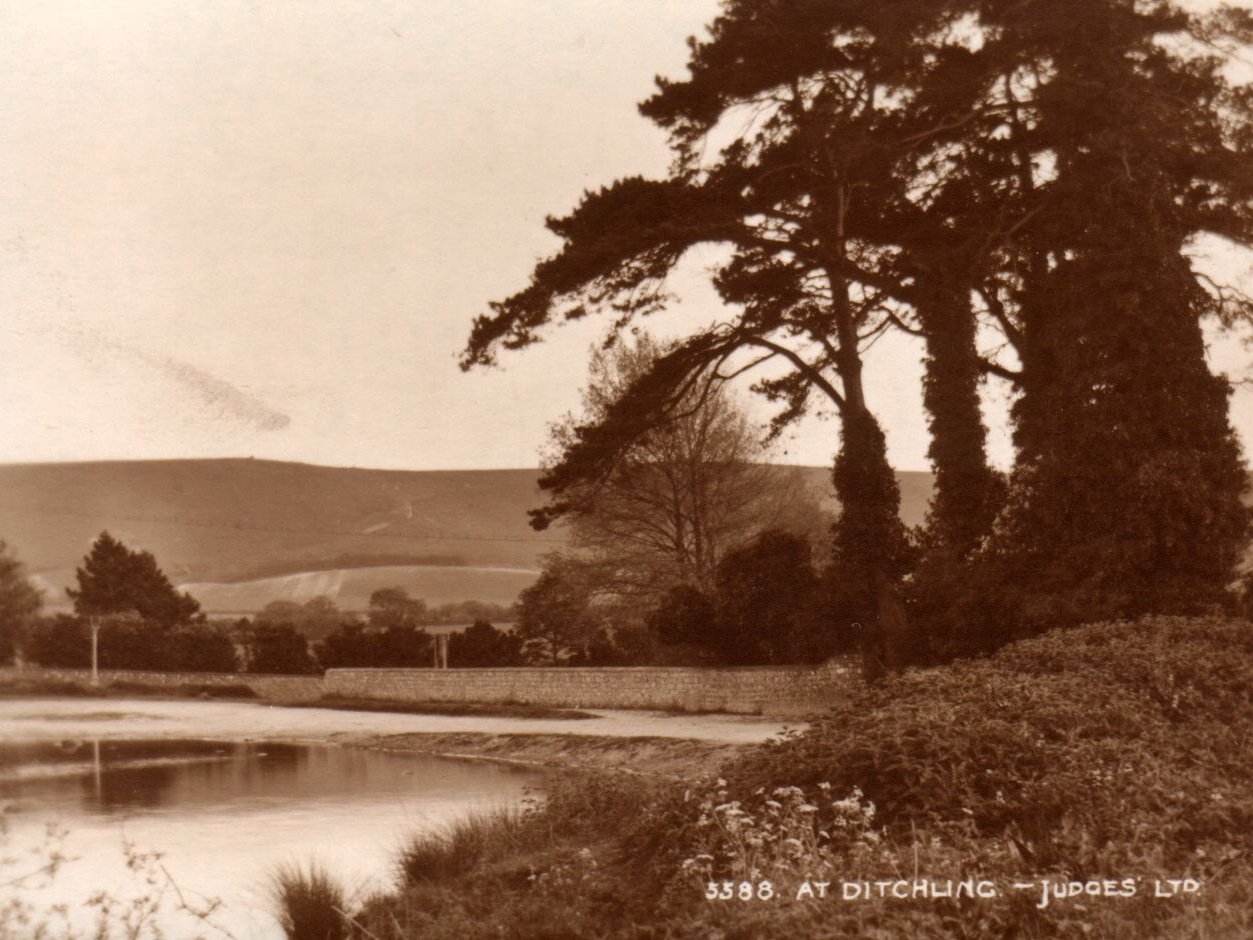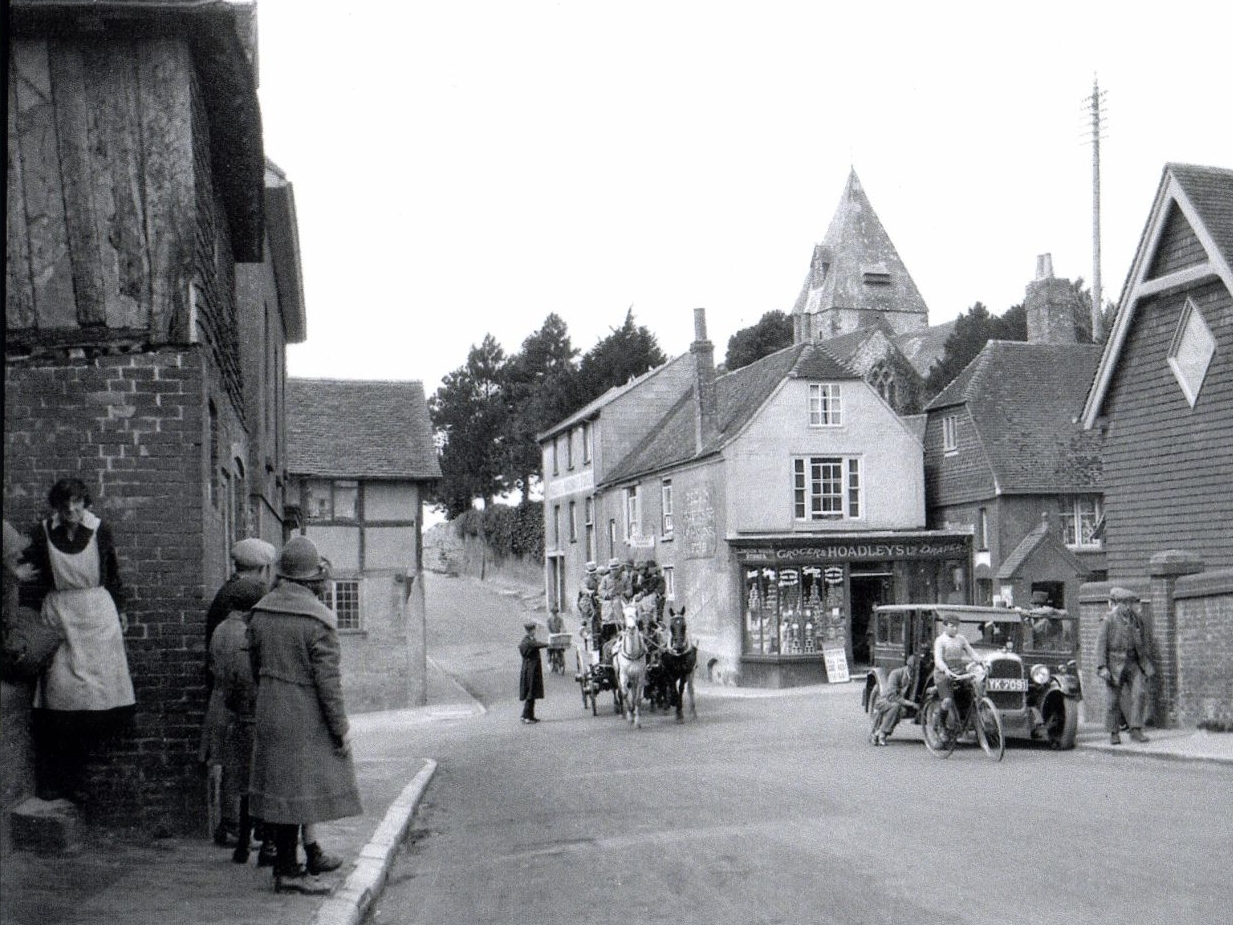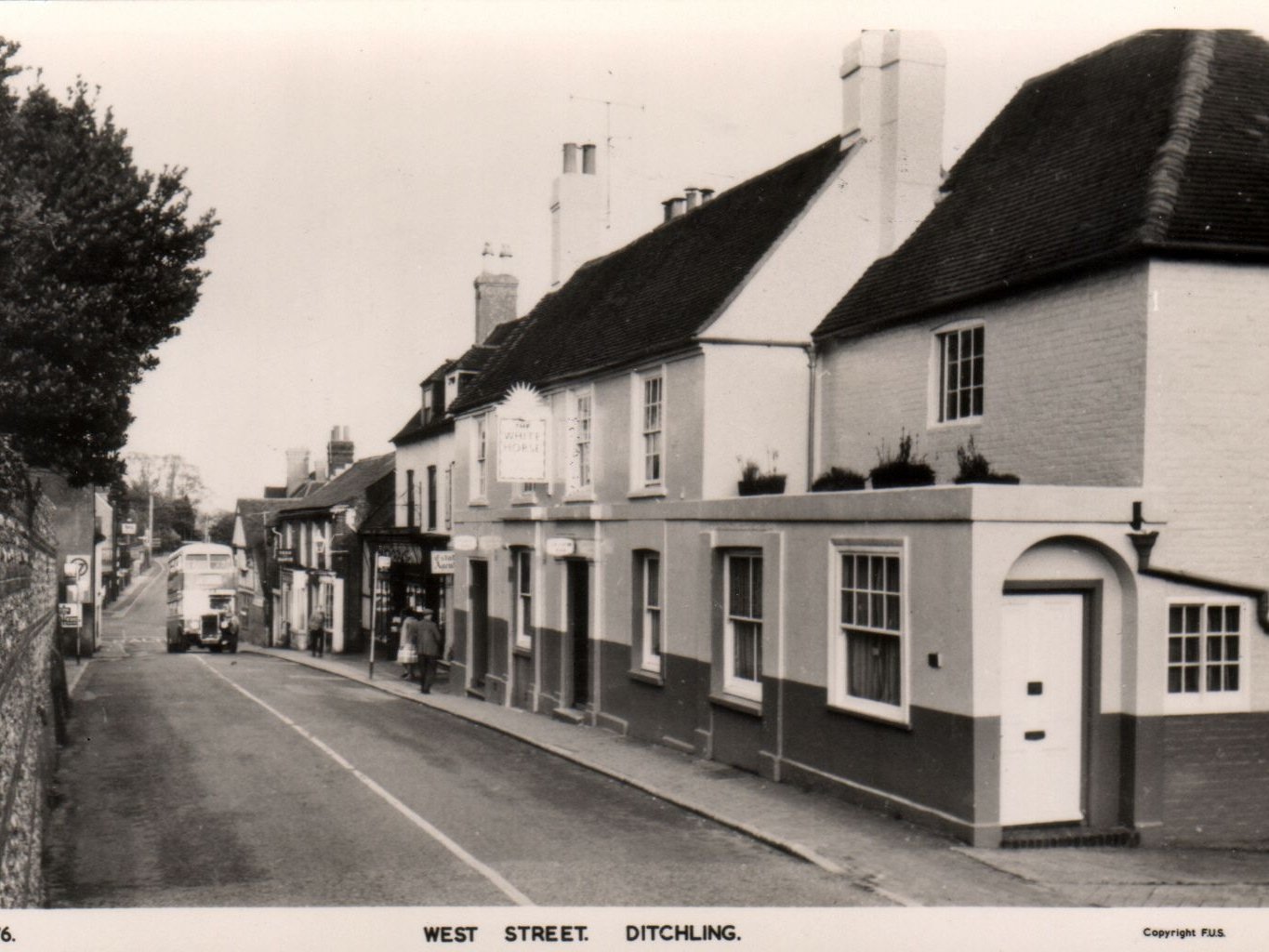To learn more about the village of Ditchling we offer a range of guided tours (maximum 15 people per group).
We offer three themed walks, but are happy to tailor a walk specifically to your interests.
We can even help arrange a venue to have tea, coffee, cakes and lunches in the village.
No Group too small
Perhaps, you live in the village and would like a family outing to see the village in a new light! There is no lower limit on group size!
For further information or to make a booking, please contact us .
We recommend you also visit our Talk page!

Walk One: Arts and Crafts in Ditchling
From the beginning of the 20th century, artists and craftsmen were attracted to the village by the tradition of rural craftsmanship and the beauty of the downland landscape. As you walk around the village today and pass the houses of stone carver Eric Gill, calligrapher Edward Johnston, artist Frank Brangwyn and others you will see the views which inspired them. In the parish church, work by 20th century craftsmen blends with the stonework of their forebears while lettering by Gill and his followers can be seen in the churchyard where several of the craftsmen are buried.
The tradition of arts and crafts continues in the village today with working silversmiths, Anton Pruden and Rebecca Smith and artists at the Turner Dumbrell Workshops a short walk from the village centre.

Walk Two: Life in Ditchling
The South Downs form a backdrop to this village where people once gathered on Moot Hill and travellers passed along the Roman Road. The parish church dates from the 12th century and Edward II had his royal park and hunting grounds. In Regency times, the village became a coaching stop en route to fashionable Brighton as well as a stronghold for Dissenters. Early in the 20th century many artists and craftsmen arrived and after the War, Dame Vera Lynn made her home in Ditchling.

Walk Three: The Spirit is Willing but the Flesh is Weak
Although only two pubs remain in Ditchling, there are still four places of worship in the village. This walk explains how Ditchling became a centre for non-denominational religions - taking an often light-hearted view of village life in both church and pub. For visitors to the village, guided tours of both the parish church of St Margaret and the 18th Century Old Meeting House are included. Visiting groups might also choose to have lunch in one of the historic pubs - the White Horse or the Bull.